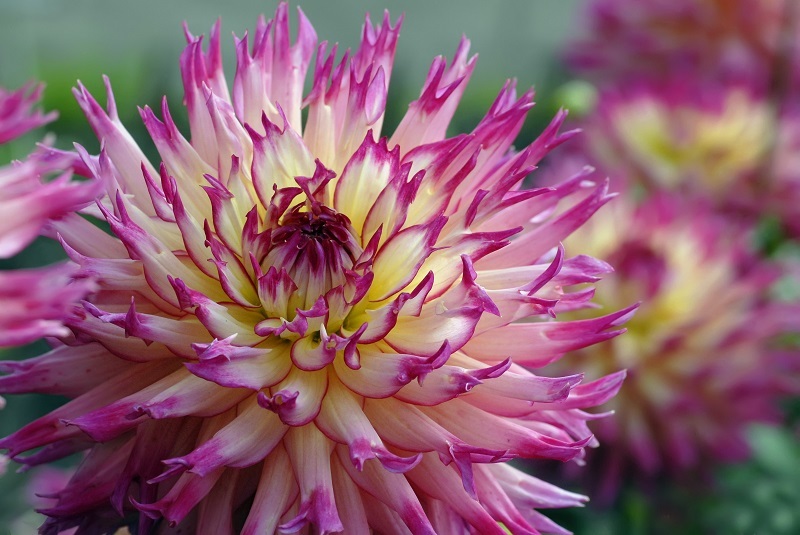Boosting the Endurance of Your Poinsettia Flora
Posted on 22/08/2025
Boosting the Endurance of Your Poinsettia Flora: The Ultimate Care Guide
Poinsettias, with their brilliant red and green foliage, are a holiday favorite in homes and offices worldwide. However, these beautiful plants are notorious for wilting soon after the festive season. Would you like your poinsettia to thrive well beyond December and possibly year-round? In this detailed, SEO-optimized article, we will explore the secrets to boosting the endurance of your poinsettia flora, ensuring vibrance, longevity, and continual blooming. Let's dive into comprehensive strategies for robust poinsettia health!

Understanding the Poinsettia Plant
Before we delve into poinsettia endurance tips, let's understand what makes this plant special. Native to Mexico and Central America, poinsettias (Euphorbia pulcherrima) are prized for their colorful bracts, often mistaken for petals. They're photoperiodic, meaning their blooming is influenced by the length of daylight and darkness. This unique characteristic is both a gift and a challenge when it comes to care and endurance.
Selecting a Healthy Poinsettia for Maximum Longevity
If you want to increase the lifespan of your poinsettia, start at the source. Selecting a healthy plant gives you a solid foundation for care.
- Look for vibrant, firm leaves: Avoid plants with yellowing, wilting, or drooping leaves.
- Check the soil moisture: It should be slightly damp, never soggy or parched.
- Avoid plants exposed to cold: Poinsettias are sensitive to temperature swings, so ensure your new plant hasn't been kept in chilled or drafty conditions.
- Inspect the bracts and true flowers: The tiny yellow clusters in the center of the bracts should be topped and not shedding.
Essentials of Growing Robust Poinsettia Flora
1. Light Requirements for Poinsettia Durability
To maximize the endurance of your poinsettia plants, consider their light needs:
- Poinsettias thrive in bright, indirect sunlight.
- Place them near a south or east-facing window, but shield from direct noon sun to prevent bract and leaf scorch.
- During winter, 6+ hours of natural light daily supports health and vigor.
2. Watering for Enhanced Lifespan
Overwatering or underwatering can quickly reduce your poinsettia's vitality. Adopt these watering habits for best results:
- Water only when the surface of the soil feels dry to the touch.
- Thoroughly soak the soil, allowing excess moisture to drain away--never let the plant sit in water.
- Reduce watering frequency during dormancy (after blooming season) to mimic natural cycles.
Tip: Yellow, dropping leaves often indicate overwatering, while dry, crispy leaves suggest underwatering.
3. Humidity and Temperature Control
Poinsettias crave a stable environment for peak endurance:
- Maintain indoor temperatures between 65-75?F (18-24?C) by day, and not less than 60?F (15?C) at night.
- Keep the plant away from cold drafts, heaters, or sudden temperature changes.
- Increase humidity by using a pebble tray, grouping plants, or occasional misting. Poinsettias prefer 50-60% humidity levels.
4. Feeding and Fertilization
For sustained poinsettia growth, proper feeding is essential:
- Do not fertilize while the plant is blooming during the holidays.
- Once new growth appears in spring, feed monthly with a balanced, water-soluble fertilizer (like 10-10-10 or 20-20-20).
- Stop fertilizing in early autumn to allow for natural dormancy and preparation for reblooming.
Seasonal Care: Keeping Your Poinsettia Lush Year-Round
Post-Holiday Maintenance
After the festive season, don't toss your poinsettia! Here's how to boost the endurance of your poinsettias after their prime display:
- Continue basic care with moderate watering and bright, indirect light.
- In March or April, prune back the plant to about 4-6 inches to encourage bushy new growth.
- Transplant into a slightly larger pot with fresh potting soil in late spring if roots become crowded.
Spring and Summer Care
- Move your poinsettia outdoors once all danger of frost has passed--choose a slightly shaded spot.
- Water and fertilize regularly to encourage new shoots and leaf growth.
- Pinch back stems every 4-6 weeks through summer to promote a compact, full plant.
Fall and Reblooming Techniques
Poinsettias are famous for requiring special treatment to rebloom:
- Starting in late September or early October, provide 14-16 hours of complete darkness each night for 8-10 weeks. Place the plant in a dark closet or cover with a box from 5pm to 8am, then return to bright daylight during the day.
- Maintain warm daytime temperatures and avoid artificial light during the night period, which can interrupt the blooming process.
- By late November, your poinsettia should begin setting new colorful bracts, making for a festive and lush display for the next holiday season.
Preventing Common Poinsettia Problems
Addressing Leaf Drop and Yellowing
Leaf drop is the most common challenge when it comes to prolonging the endurance of poinsettia flora. Causes can include:
- Sudden temperature changes
- Overwatering or underwatering
- Exposure to cold drafts or dry air
Remain vigilant and adjust care as needed, ensuring stable conditions and correct moisture levels.
Pest and Disease Battles
Poinsettias can sometimes attract unwanted visitors, weakening the plant's stamina:
- Aphids, Whiteflies, or Spider Mites: Treat with insecticidal soap or neem oil, and increase ambient humidity.
- Powdery Mildew or Root Rot: Avoid overhead watering and ensure proper drainage.
- Viral or Bacterial Issues: Isolate affected plants and remove damaged foliage.
Regularly inspect leaves and stems for pests or unusual spots, and act promptly to protect your poinsettia's vigor.
Repotting for Extended Poinsettia Endurance
A healthy root system is vital for prolonging your poinsettia's life:
- Repot every 1-2 years, preferably in spring, to replenish soil nutrients and prevent root crowding.
- Use a well-draining, peat-lite potting mix to mimic natural conditions.
- Ensure the new pot has drainage holes to avoid waterlogged roots.
Long-term Success: Poinsettias as Perennial Houseplants
With careful attention, poinsettias can flourish as perennials. Here are advanced tips for enthusiasts seeking year-round performance:
- Monitor for light stress: Insufficient sunlight leads to legginess and pale foliage, while too much causes crisping of bracts.
- Master the reblooming technique: Consistency in darkness/light cycles each fall is crucial for vibrant color and renewed blooms.
- Don't be afraid to prune: Regular trimming stimulates bushier growth for next year's display.
- Rotate the plant occasionally for symmetrical growth.
- If returning outdoors each year, watch for pests and ease the plant in gradually to prevent sunscald or shock.

Frequently Asked Questions About Boosting Poinsettia Endurance
How long can poinsettias last with proper care?
With optimal conditions and attentive care, poinsettias can remain attractive and healthy for many years, not just during the holidays. There are documented cases of poinsettias thriving for five or more years!
Why are my poinsettia leaves curling or falling off?
This is often due to erratic watering, drafts, or temperature extremes. Adjust your care routine to stabilize conditions for a quick recovery.
Can I plant my poinsettia outside permanently?
Poinsettias can be grown outdoors in USDA zones 9-11, where winter temperatures don't dip below freezing. In cooler climates, treat them as indoor perennials, only taking them outside during warm months.
Should I fertilize my poinsettia while it's blooming?
It's best to withhold fertilizer during blooming (typically November to January). Resume feeding after the color begins to fade and new growth emerges in spring.
Essential Takeaways: The Path to a Thriving, Enduring Poinsettia
- Select a healthy specimen to start your poinsettia success story.
- Offer bright, indirect sunlight and stable room temperature.
- Water wisely--allow soil to dry slightly between waterings.
- Increase humidity and prevent draft exposure for lasting health.
- Follow seasonal care, including strategic pruning and dormancy breaks.
- Be vigilant for pests and diseases, correcting issues early for best results.
- Master the fall reblooming routine to showcase your poinsettia's stunning color annually.
Final Thoughts: Cultivating Enduring Poinsettia Beauty
Boosting the endurance of your poinsettia flora isn't just about extending their holiday charm. It's about transforming a short-lived ornamental into a lush, perennial feature of your living space. With the strategies outlined here, your poinsettias will flourish, rebloom, and bring year-round joy. Pay attention to their environments, adapt your care to their seasonal needs, and you'll enjoy vibrant, healthy poinsettias for years--and holidays--to come. Happy gardening!
Latest Posts
Colorful Birthday Bouquet Ideas
Harness 3 Uncomplicated Techniques for Flower Freshness
Boosting the Endurance of Your Poinsettia Flora





